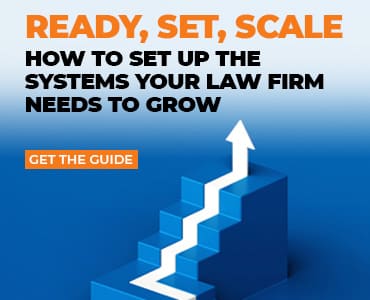The species of attorney that enjoys tracking time has not yet been discovered, or created in the lab. Time capture has been the bane of a lawyer’s existence ever since there have been lawyers. The universal system is universally disliked. But a new category of time management tools offers a novel solution for an old problem.
Whether you’re tracking your time on paper or through an electronic system (be it associated with your law practice management software system or not), you probably dislike doing so very much.
The main reason lawyers find timekeeping so disagreeable is that it disrupts the flow of work—to capture the time spent on what they have worked on, attorneys are forced to stop working on whatever else they have to do. In a modern, busy law practice, with all manner of multitasking ongoing, it’s difficult to find a particularly effective stopping-place. The expedient is to ignore the requirement, at which point uncaptured time begins to pile up. Neither is all this avoidance conscious: Sometimes, through the course of a particularly busy day, lawyers can simply forget to start and stop the clock—even if it is otherwise ingrained in them to do so, on the regular.
In any event, the lost time becomes less and less likely to be billed (promptly, or ever), unless and until the protagonist settles on a late-night or weekend cram session just to catch way up. But despite best efforts, that lost time is sometimes lost forever, impossible to reconstruct after the fact.
Despite the obnoxious interruption of daily workflow, the bare fact is that time capture just has to be done; it’s something that attorneys must stay on top of, consistently and continuously, because it’s integral to getting paid. Attorneys billing hourly are obviously required to track their time. But even those who use alternative billing methods need to track their time, at least initially, to set their fees—and the most diligent such practitioners want to continue to track (at least loosely) to determine changes in case or project values over time.
Still, nobody wants to come to a halt to write something down, or to click and unclick a button to start and stop a timer, even if that timer exists within the most popular office program in use at the firm.
This all begs the question: Isn’t there a less-disruptive way?
Alternatives to Disruptive Systems
Passive, background timekeeping programs may offer a solution to the disruption caused by traditional time capture systems. These programs work on the thesis that almost all of the work done in a modern office is accomplished through the use of electronic devices. Background timekeepers, then, track everything that you do on your primary device, or even across your devices. This means that all of your activity is being monitored, in the background and continuously, as you progress through your workday. There is no stopping your workflow; there is no starting a timer. As far as you’re concerned, the system is completely passive: You don’t have to do anything except your work.
These timekeepers also generate specific reports, based on fields that you select, from the stored log of your activity. Customized reports can then be used to create invoices, including through popular accounting applications, like QuickBooks. In the raw, these programs can be highly effective; but, users can, and should, train them to work in the ways that they want. Customization options include: automating repetitive processes; creating and utilizing client tags; and allowing tracking of a “work” browser (research in Firefox, read Cats that Look Like Ron Swanson in Chrome). These background timekeeping systems are particularly useful for attorneys:
- Chrometa (see my full review of Chrometa, here; as well as my update, here)
- Smart Time
- Time Doctor (time tracking, screenshot monitoring and chat monitoring tool)
As with most Internet-based programs, you can sign up for a trial period to test any of these systems for free for a limited time.
Even if you never end up using one of these types of programs for passive time tracking on a full-time basis, testing one can be a downright enlightening experience. You may be surprised to find out just how much time you leave behind everyday.
















